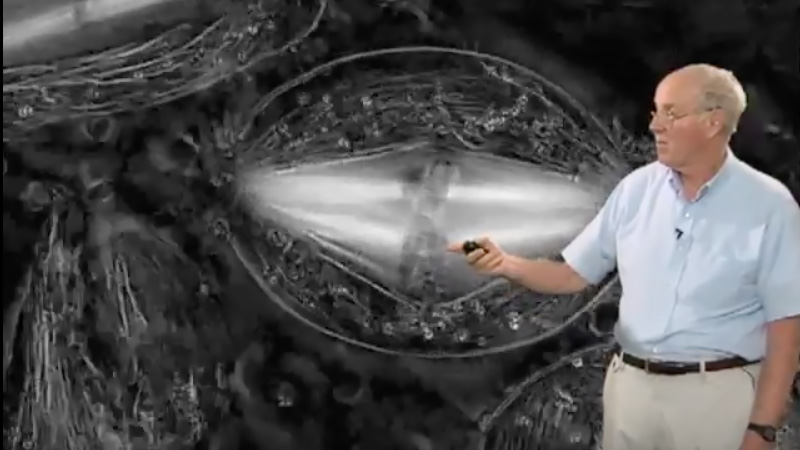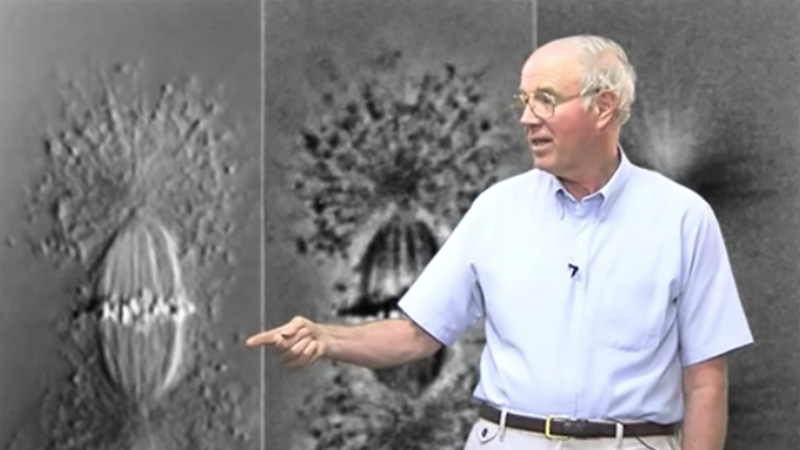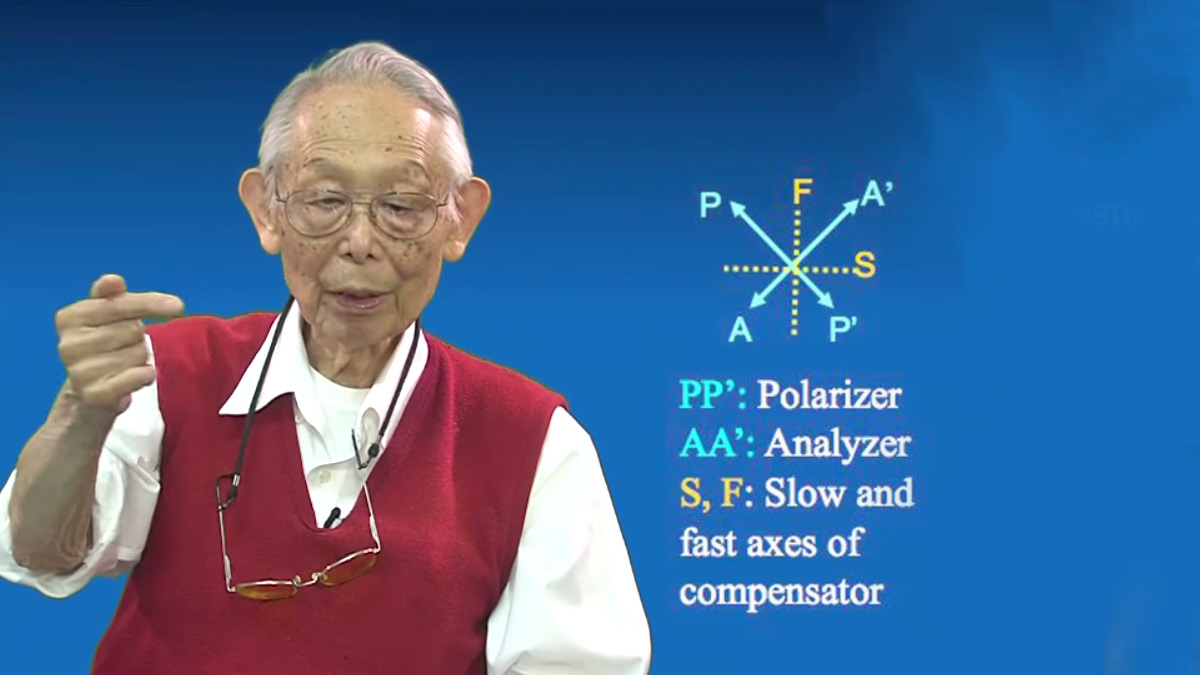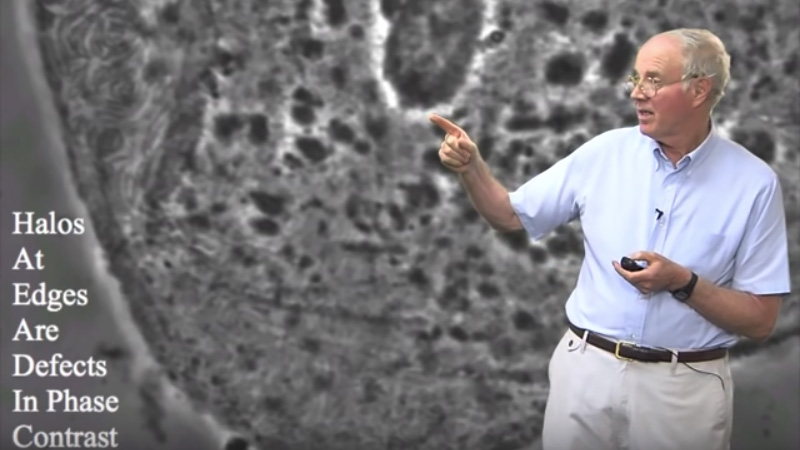Talk Overview
Shinya Inoue, one of the great innovators of polarization microscopy, describes what polarized light is and how light passing through a calcite crystal is split into two orthogonal polarized light beams.
Questions
Assessments
- When a long birefringent object (like a mitotic spindle) is placed between two crossed polarizers, at what angle will it appear brighter (for example, angle relative to the transmission axis of the first polarizer)?
- When Dr. Inoue stretches the plastic cellophane in-between the crossed polarizers, the image becomes brighter because
- The material absorbs light better
- The material becomes fluorescent
- The polymers in the material become more aligned
- The material becomes more transparent to light
- True or false. Both light and sound waves travel slower in denser medium.
- The term that describes the double refraction of light traveling through a crystal or other material is…..
- What is the evidence in this video that the images that appear through calcite are polarized in orthogonal directions?
- Research on your own. Why are there two images formed after light travels through a calcite crystal?
Answers
View AnswersSpeaker Bio
Shinya Inoue

Dr. Inoue is a Distinguished Scientist at the Marine Biological Laboratory in Woods Hole, MA. He has made numerous contributions to microscopy and cell biology, including developing polarized light microscopy and video microscopy. Inoue was awarded the Order of the Sacred Treasure by the Government of Japan and is a member of the National Academy… Continue Reading








Leave a Reply